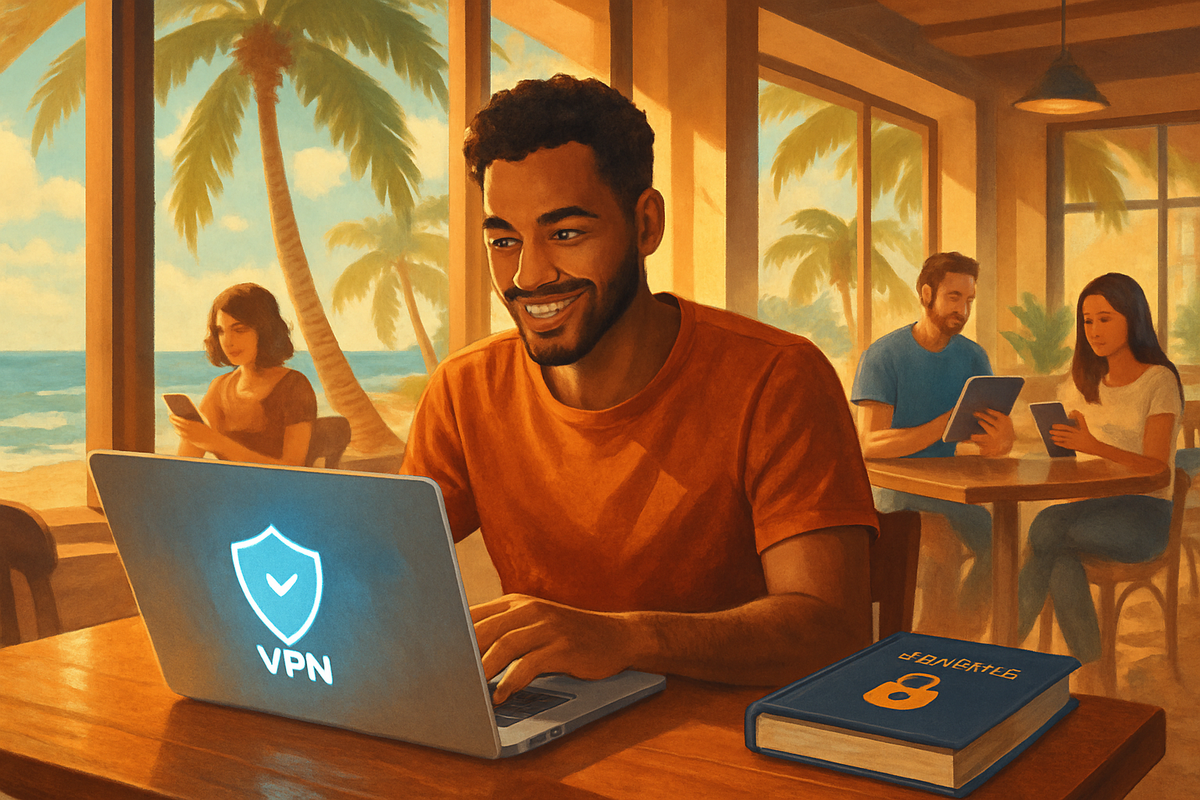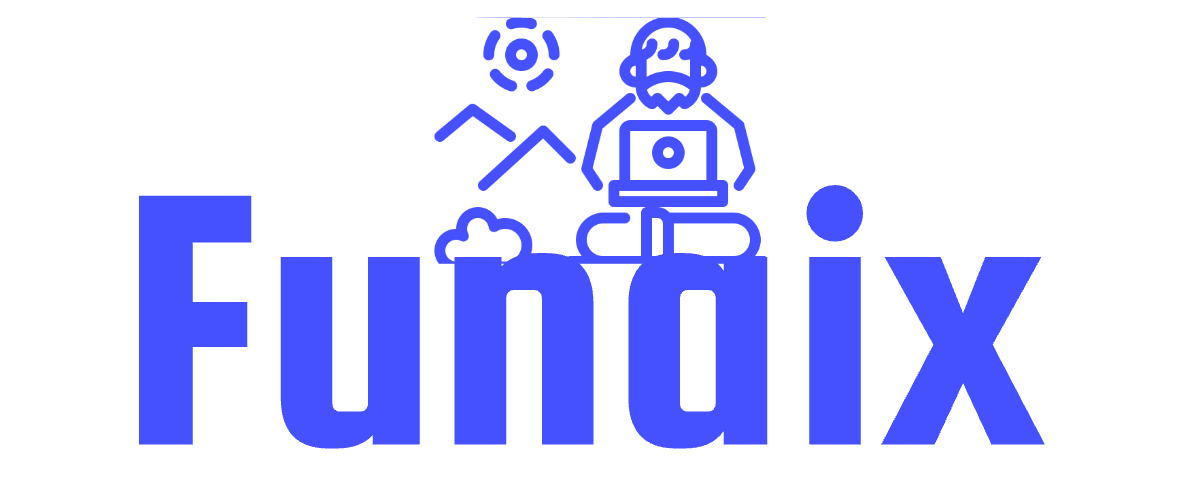The Cybersecurity Survival Playbook for Digital Nomads: How to Stay Safe, Private, and Productive Anywhere in 2025
Embrace the digital nomad life without fear. Equip yourself with a cyber survival playbook to fend off global threats, from AI phishing to supply chain hacks. Because cybersecurity is as essential as your morning coffee—but with fewer jitters.

Welcome to the Wild, Wild Web: Why Digital Nomads Need a Cyber Survival Playbook
It’s 2025, and the world is your office—whether you’re sipping espresso in a Lisbon café or fielding Zoom calls from a hammock in Bali. But before you hit “connect” on that free Wi-Fi, ask yourself: Could a cybercriminal be lurking in the shadows, ready to turn your digital freedom into a digital fiasco?
Remote work is booming: over 35 million people are expected to work remotely this year, and digital nomads are prime targets for increasingly sophisticated cyber threats. From AI-powered phishing that’s creepily personal, to public Wi-Fi traps, to sneaky supply chain hacks, the risks are as global as your ambitions. But don’t pack your bags just yet—pack this survival playbook instead.
“Cybersecurity is no longer a luxury for digital nomads. It’s a daily necessity—like coffee, but with fewer jitters.”
Chapter 1: Know Your Enemy—The Top Cyber Threats for Nomads in 2025
- AI-Powered Phishing & Deepfakes: Personalized, convincing, and relentless. Don’t trust that "bank manager" video call.
- Public Wi-Fi Eavesdropping: That free airport Wi-Fi? It’s a hacker’s playground.
- Cloud & SaaS Vulnerabilities: Multi-cloud life is great—until a misconfigured app leaks your contracts to the world.
- Supply Chain Attacks: Ever heard of SolarWinds? Hackers love to ride into your workflow on the back of trusted tools.
- Device Theft & Loss: Your laptop is worth more than gold if it’s unlocked and unencrypted.
Source: PeopleTech Cybersecurity Trends 2025
Chapter 2: The Zero Trust Mindset—Trust No One, Not Even Your Fridge
In the era of remote work, the traditional office perimeter is toast. Enter Zero Trust: the security philosophy that says, “Never trust, always verify.” Whether you’re logging in from a coworking space or a jungle hut, apply these principles:
- Authenticate Everything: Use multi-factor authentication (MFA) everywhere. If your tool or app doesn’t offer it, ask why—or find a better one.
- Least Privilege Access: Only give apps, collaborators, and devices the minimum access needed. No more, no less. Your cloud storage should not be an open buffet.
- Continuous Monitoring: Use tools that alert you to suspicious logins or file activity. Paranoia is a virtue (sometimes).
“Zero Trust is like sunscreen for your data: apply liberally, and reapply often.”
Chapter 3: The Digital Nomad’s Cyber Toolkit—Must-Have Tools for 2025
1. Lock Down Your Connections
- VPNs: Encrypt all traffic when using public Wi-Fi. Choose services with a no-logs policy and robust encryption (think NordVPN, ExpressVPN, Surfshark).
- Secure Hotspot Devices: Consider a portable, password-protected hotspot for critical work. It’s like BYO-internet, minus the sketchy connections.
2. Passwords: The Gatekeepers
- Password Managers: Use a reputable password manager (1Password, Dashlane, LastPass) to store and generate unique, complex passwords. No more “password1234”—promise?
- MFA/2FA: Enable it everywhere, especially on email, banking, and social platforms.
3. Encrypt and Backup Everything
- Cloud Storage with End-to-End Encryption: Services like Dropbox Business, pCloud, or Google Workspace Security help keep files safe—and accessible—wherever you roam.
- Device Encryption: Make sure laptops and phones are encrypted and can be remotely wiped if lost.
- Automated Backups: Use automated, versioned backups to recover from ransomware or accidental "oops" moments.
4. Secure Communication Channels
- Encrypted Email: ProtonMail, Tutanota, or similar services for sensitive communication.
- Secure Messaging: Use Signal or WhatsApp for end-to-end encrypted chats.
5. Financial Fortress
- Multi-currency Banking Apps: Wise and Revolut help you avoid currency conversion scams and simplify tax compliance.
- Cyber Insurance: Consider coverage that protects against digital theft, ransomware, and device loss (SafetyWing, Allianz).
For more on these tools, check out trusted reviews and always vet providers for up-to-date security certifications.
Chapter 4: AI—Your Cyber Sidekick (and Sometimes, Your Foe)
AI isn’t just for automating your travel itinerary or sorting your inbox. In 2025, it’s a double-edged sword—empowering both defenders and attackers. Here’s how to keep AI on your side:
- AI-Powered Security Suites: Use tools that employ machine learning to spot unusual login attempts, phishing emails, or malware. Think of it as a bodyguard for your data, minus the sunglasses.
- Beware of AI-Enhanced Scams: If a message or video seems eerily personalized, pause before clicking. Deepfake phishing is on the rise—verify identities through a second channel.
- Automated Cloud Monitoring: Use SaaS platforms that alert you to misconfigurations or suspicious third-party access.
“In 2025, AI is both your digital Swiss Army knife and your arch-nemesis. Stay sharp—train your tools, and trust your gut.”
Chapter 5: The Daily Cyber Hygiene Checklist—Because Clean Data is Happy Data
- Update, Update, Update: Set all devices and apps to auto-update. Patches are your armor.
- Use Unique Passwords: Never reuse passwords, especially for critical accounts.
- Log Out of Public Devices: Always sign out of shared computers and clear browser sessions.
- Be Wary of Shoulder Surfers: Yes, that person at the next table could be watching you type your password.
- Regularly Review App Permissions: Don’t let apps overstay their welcome. Revoke what’s not essential.
- Back Up Daily: Cloud and local backups are lifesavers, not just for the paranoid.
Chapter 6: Advanced Moves—Surviving the Supply Chain & Cloud Jungle
- Vet Your Tools: Only use reputable, regularly updated SaaS and cloud platforms. Check for security certifications.
- Zero Trust for Integrations: Grant third-party apps the least possible access.
- Multi-Cloud Monitoring: Use dashboards that unify alerts from all your cloud services—no more playing whack-a-mole with threats.
- Incident Response Plan: Know what you’ll do if your main SaaS goes down or is breached. Have a backup workflow ready.
Tip: Regularly run tabletop exercises—yes, even solo—to rehearse your response to breaches or ransomware attacks.
Chapter 7: Community, Comments, and the Power of Shared Wisdom
Cybersecurity isn’t a solo journey. The digital nomad community thrives on shared stories—near misses, clever hacks, and the occasional embarrassing blunder. Want to swap tips, ask questions, or share your own cyber-victory? Subscribe for free to become a Funaix Insider at funaix.com—only subscribers can join the comment conversation, read blog comments, and help us all level up our cyber-defense game. Subscribing is free (for now), and it’s your ticket to our global, savvy, slightly paranoid family.
“No one ever got hacked by being too prepared—or too well-connected.”
Final Thoughts: Roam Far, Stay Secure, and Keep Your Sanity (and Data)
Being a digital nomad in 2025 is an epic adventure—one that rewards curiosity, flexibility, and just a dash of healthy skepticism. By arming yourself with the right tools, a Zero Trust mindset, and a community of fellow cyber-savvy travelers, you can work and wander with confidence.
The world is open. Just don’t leave your digital doors unlocked.
Ready for more smart tips, news, and exclusive perks?
Subscribe to Funaix for free—and join the ultimate digital nomad community. Your future self (and your data) will thank you!




